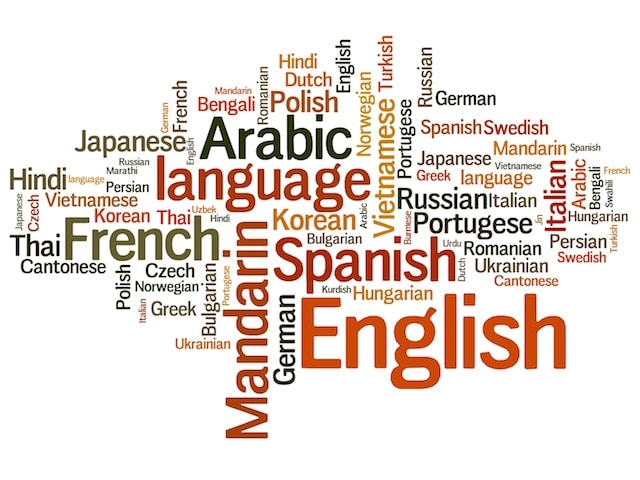GUJARATI LANGUAGE
Understanding The Gujarati Language & Providing Professional Gujarati Interpreters, Translators and Transcriptionists
American Language Services? (AML-Global) understands the importance of working in the Gujarati language. For over a Quarter of a Century, American Language Services ?has worked with the Gujarati language as well as hundreds of others from around the world. We offer comprehensive language services 24 hours, 7 days a week worldwide by providing Gujarati interpreting, translation and transcriptions services along with hundreds of other languages and dialects. Our linguists are native speakers and writers who are screened, credentialed, certified, field tested and experienced in a number of specific industry settings. The Gujarati language is unique and has very specific origins and characteristics.
Gujarati Around the World and in India
The Gujarati language is spoken in India, Pakistan, South Africa, Uganda, Tanzania, Kenya, U.S., U.K., Australia, New Zealand, Fiji, Canada, Zambia, and Zimbabwe. It is native to the Indian state of Gujarat, and is its chief language. India’s culture is marked by a high degree of syncretism and cultural pluralism. It has managed to preserve established traditions while absorbing new customs, traditions, and ideas from invaders and immigrants and spreading its cultural influence to other parts of Asia. Traditional Indian society is defined by relatively strict social hierarchy. The Indian caste system describes the social stratification and social restrictions in the Indian subcontinent, in which social classes are defined by thousands of endogamous hereditary groups. Traditional Indian family values are highly respected, and multi-generational patriarchal joint families have been the norm, although nuclear families are becoming common in urban areas. An overwhelming majority of Indians have their marriages arranged by their parents and other respected family-members, with the consent of the bride and groom. Indian cuisine is characterized by a wide variety of regional styles and sophisticated use of herbs and spices. The staple foods in the region are rice and wheat. Many Indian festivals are religious in origin, although several are celebrated irrespective of caste and creed. Some popular festivals are Diwali, Ganesh Chaturthi, and Ugadi.
Origin of the Gujarati Language
Gujarati is a modern Indo-Aryan language evolved from Sanskrit. Old Gujarati (1100-1500 AD), ancestor of Gujarati and Rajasthani, was spoken by the Gurjars in northern Gujarat and western Rajasthan. Texts of this era display characteristic Gujarati features such as direct/oblique noun forms, postpositions, and auxiliary verbs. Middle Gujarati (1500-1800 AD), split off from Rajasthani, and developed the phonemes and the auxiliary stem chi-, and the possessive marker -n-. Modern Gujarati (1800 AD to now) has led to a major phonological change through the deletion of final’s, such that the modern language has consonant-final words. Grammatically, a new plural marker of -o developed. In literature, the third quarter of the 19th century saw a series of milestones for Gujarati, which previously had had verse as its dominant mode of literary composition.
Development of Gujarati
Similar to other Nagari writing systems, the Gujarati script is an abugida. It is used to write the Gujarati and Kutchi languages. It is a variant of Devanagari script differentiated by the loss of the characteristic horizontal line running above the letters and by a small number of modifications in the remaining characters. Gujarati and closely related languages, including Kutchi, can be written in the Arabic or Persian scripts. This is traditionally done by many in Gujarat’s Kutch district. Gujarati is a modern Indo-Aryan language descended from Sanskrit (old Indo-Aryan), and this category pertains exactly to that: words of Sanskritic origin that have demonstratively undergone change over the ages, ending up characteristic of modern Indo-Aryan languages specifically as well as in general. Gujarati is a head-final, or left-branching language. Adjectives precede nouns, direct objects come before verbs, and there are postpositions. The word order of Gujarati is SOV, and there are three genders and two numbers. There are no definite or indefinite articles. A verb is expressed with its verbal root followed by suffixes marking aspect and agreement in what is called a main form, with a possible proceeding auxiliary form derived from to be, marking tense and mood, and also showing agreement.
Who are You Going to Trust with Your Vital Gujarati Language Needs?
The Gujarati language is an important language worldwide. It is vital to understand the general nature and specific idiosyncrasies of Gujarati. Since 1985, AML-Global has provided outstanding Gujarati interpreters, translators and transcriptionsts worldwide.
























